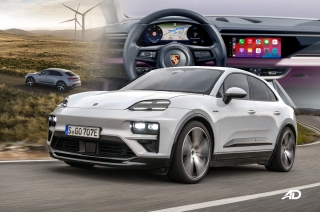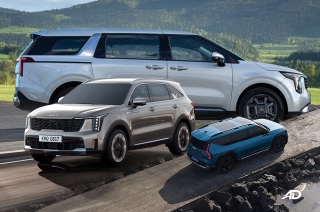
It is important to always maintain the correct tire pressure in your car’s wheels. That’s why we recommend checking it regularly to avoid future inconveniences. However, you might notice that your tire loses pressure at certain instances – often, after a month of properly inflating it. Sometimes, you’ll even find a drop of PSI* at a night despite checking it earlier in the afternoon.
The decrease in the PSI, or basically the loss of tire pressure, does not always mean your tires are punctured and that you need to rush to the vulcanizing shop in full-panic mode. In certain cases, it is normal for your tire to deflate over time—or in rare occasions, due to atmospheric conditions—as long as the loss is not that severe. What’s severe and what’s not? Here, we listed a few possible causes that might spare yourself from having panic attack.
Tire and valve system check
Before anything, you need to make sure that your tire is in good condition, along with all the other components that house air. That includes the tire itself, checking to see if there are no punctures or holes where the air may leak. Then you want to make sure that your valve is still in good condition. Check the seal and check to see if the valve is allowing air in via a pump and sealing properly while it is left alone. Doing this should reduce the rate of your tires losing air and allow for long service life between pumps.
Permeation

One possible reason why your tire could lose its pressure is due to permeation. While it sounds very scientific, it refers to the diffusion of molecules through a membrane. A tire will be able to hold air for a long time, however, due to permeation and the difference in sizes of the air molecules and the membrane of your tire, air will be able to escape slowly. Don’t worry as this is a natural occurrence that can be easily solved with a quick visit to the gas station to get more air back into your tire. It is important to note that the recommended tire pressures for your vehicle can be found on the driver’s side door sill or in the owner’s manual in case you need a guide.
In tires, rubber blends vary depending on the maker and blends contribute to the tire’s permeability. Permeability is a state of a solid material that causes liquid or gas (permeants) to pass through it. Some tire rubber blends are more permeable than others, meaning air tends to escape easier. So, checking regularly would keep you just fine. Failure to check your tire pressure for a longer time poses handling and fuel efficiency changes on your vehicle – in worst cases, danger.
Temperature changes

Another possible cause of your tires losing pressure is due to temperature changes. You might have noticed that there is a slight tire pressure difference on a sunny day compared to a cold day. This is because temperature plays a big factor when it comes to air molecule behavior. Exposing your tire to heat will cause the air molecules inside the tire to expand causing an increase in pressure. Conversely, in much colder weather, the temperatures make the molecules in your tires contract which is why you can sometimes experience lower tire pressures.
It is important to remember that the amount of air inside your tire and pressure aren’t interchangeable. You may have the same amount of air in your tire and inconsistently changing pressure readings all at the same time. A drop in tire pressure doesn’t mean your tire lost some air, as pressure refers to the force caused by the movement of molecules inside the tire. Because molecules move differently under different temperature, it’s better to check your tires when your they aren’t hot, nor when the weather outside is too cold. This way, you’ll get the normal tire pressure reading.
Altitude

Altitude can also play a big factor as to why your car’s tire pressure fluctuates. The main reason for this is that tire pressure is a direct relationship between the air inside the tire and the outside atmospheric pressure.
The higher up you drive the lower the pressure becomes as there is less air present. This is because the gas molecules, when trapped inside a volume (which, in our case here, is a tire), constantly move around. In the process, they collide with one another as well as with the volume’s surface (tire wall). While this is all happening, gas molecules outside the tire also exert pressure onto the outside surface of the tire.
That said, the lesser the pressure outside, the harder it is for the molecules inside to hit the inner walls of the tire, since there is not enough outside pressure to balance it out. And, this occurrence actually is the reason why you perhaps would register a higher tire pressure reading in Baguio than when you’re in Manila
Impact breaks

Bumps and road imperfections can also cause your tires to lose their air pressure especially when it comes to parking or maneuvering on curves. This is because impact breaks caused by hitting curbs, speed bumpers, or any object at speed stresses out the sidewall of your tire possibly damaging the cords within it to break. When ignored, this can cause gradual tire problems, including recurring tire pressure and air loss. When this happens, you may want to get a replacement as soon as possible, as this is something you should deal with seriously.
However, it should be remembered that, despite these plausible reasons for loss of tire pressure, it is still important to be cautious. So, the moment your tires’ pressure keeps on dropping despite filling to the right amount of air over and over, that’s when you seek professional inspection and have the problem addressed.
Latest Features
-
How to prepare your car for the Holidays / Featured Article
Here are our handy tips on how to keep you on the road and stress free this holiday season.
-
An all-electric future: The Porsche Macan Electric / Featured Article
Porsche’s Macan goes all-electric; it’s a new beast with an electrified heart, yet unmistakably Porsche in performance and spirit.
-
Which Kia should I buy? / Featured Article
We’re here to help you decide which Kia vehicle is best for you, whether it’s a sedan, crossover, or minivan.
Popular Articles
-
Electric Vehicles in the Philippines for under P1 million
Jerome Tresvalles · Aug 19, 2025
-
Top 3 Cars For Every Lifestyle—What Cars Are Right For You? | Behind a Desk
Caco Tirona · Apr 24, 2024
-
5 Tips to Maximize Fuel Efficiency
Jerome Tresvalles · Sep 09, 2024
-
Five driving habits that are draining your fuel tank
Jerome Tresvalles · Jun 24, 2025
-
Can engine braking harm your engine?
Jerome Tresvalles · Sep 11, 2025
-
Do electric cars even need maintenance?
Jerome Tresvalles · Oct 23, 2024
-
Best vehicles for an active outdoor lifestyle
Shaynah Miranda · Jul 25, 2024
-
How to drive different types of vehicle transmissions
May 23, 2024
-
5 easy ways to keep your car interior clean
Allysa Mae Zulueta · Nov 15, 2021
-
How to survive Metro Manila traffic
Earl Lee · Aug 16, 2022



